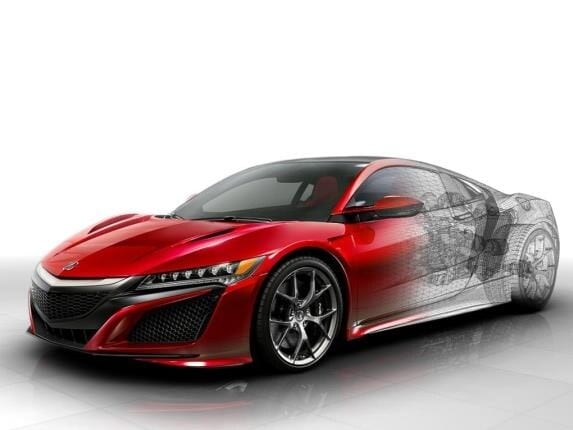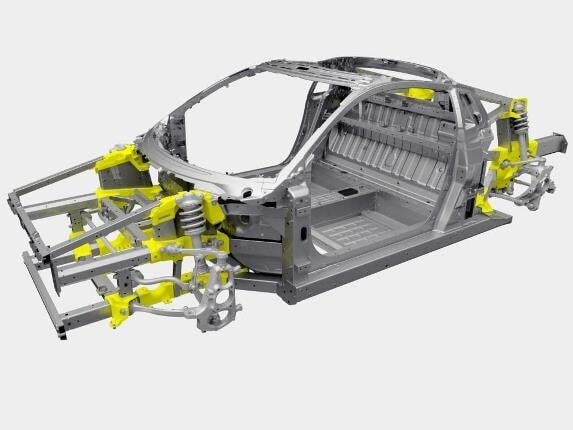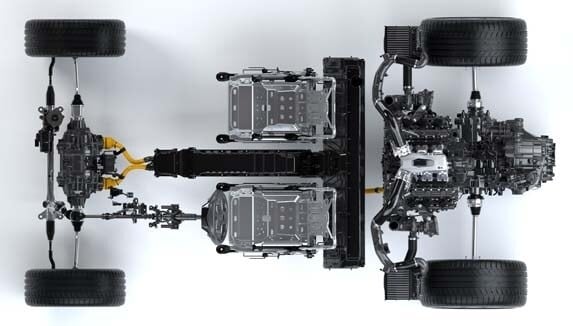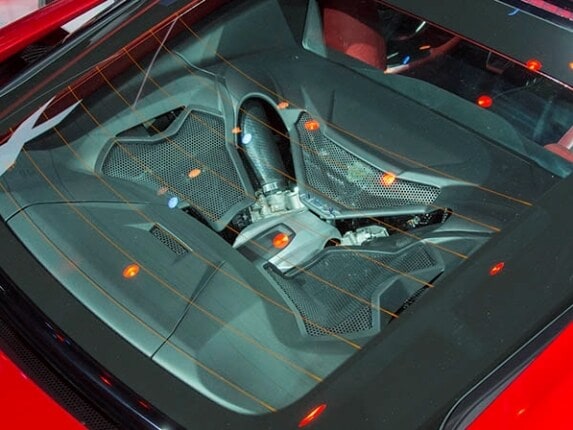From the time it first appeared in concept form at the 2012 Detroit Auto Show to its unveiling in production form last January in the Motor City, the all-new 2016 Acura NSX promised to be a techo tour de force. Today, Acura used a gathering held in conjunction with the SAE 2015 World Congress and Exhibition to shed additional light on some of the finer design points found in its eagerly awaited supercar, which is set to launch later this year. This deep dive focused on various aspects of the 2016 NSX’s structure, aerodynamics, powertrain, chassis, and advanced engineering techniques that will ensure this latest iteration handily surpasses the formidable dynamic benchmarks established by the Acura’s original mid-engine wonder. "Our goal was to create something altogether new and exciting, something that advances the concept of a next-generation supercar in the spirit of the original NSX," said Ted Klaus, chief engineer and global development leader of this new Gen II variant. "In order to provide NSX-level value, we needed to push ourselves to experiment with, refine and then realize many new technologies."
Innovative Design Meets Innovative Technologies
The core of the new Acura NSX consists of a sophisticated multi-material space frame structure that combines aluminum and ultra-high-strength steel which are anchored to a carbon fiber floor. Shawn Tarr, principal engineer and Acura NSX body development leader pointed out "anything and everything that could offer incredible base rigidity and lightweight design was on the table." To that end, Acura used an automotive-first abalation casting technique to create aluminum connector nodes (shown in yellow on the cutaway) that possess exceptional rigidity but offer the requisite ductility normally found only in an extrusion. The NSX also features all-new three-dimensionally formed ultra-high-strength steel A-pillars that are robust but still slender enough to maintain superior sightlines for the driver. Collectively, these design elements create an optimized foundation that Acura says will pay big-time handling benefits as well as provide class-leading crash-testing marks.
Also: Class of 2016 — New Cars Ready to Roll
One the aero front, Acura notes that its Total Airflow Management approach to both the exterior and internal body design of the NSX allowed for clean styling and superior overall efficiency. Reinforcing knowledge gained by racing-derived computational fluid dynamics with supplemental wind tunnel work and real-world testing allowed the NSX to forego radical flaps and huge wings while permitting powertrain engineers working in Japan and the U.S.-based design team to devise equally efficient ways to keep things cool under the car’s sleek skin. For the record, the NSX has no fewer than 10 dedicated heat exchangers on board to regulate temps in its front twin-motor unit (TMU), twin-turbo VTEC V6 engine and its 9-speed dual-clutch transmission. Included in that count are a pair of intercoolers, one in each side intake, to chill out the engine’s intake air. The NSX also bolsters rear downforce with six directed vortice flows and a highly efficient lower diffuser.
Also: Kelley Blue Book Best Buy Awards of 2015
While there’s still no official word on the NSX’s total system output – 550-plus would be a good starting point — Acura says the car’s new force-fed V6 displaces 3.5 liters, features both port and direct fuel injection as well as a race-bred dry sump lubrication system that helps prevent oil starvation and enhances performance during max-effort cornering. Mounted to the back of the engine is a direct-drive electric motor that applies torque directly to the crankshaft. The compact design of the NSX’s engine and transmission also allow optimal positioning in the chassis, which in turn gives it the lowest-in-class center of gravity. The NSX’s unique Sport Hybrid SH-AWD (Super-Handling All-Wheel Drive) system with full torque vectoring also has been specifically optimized for this application. It works with the car’s unique front suspension design to effectively decouple torque produced by the TMU from the actual steering effort experienced by the driver.
More High-performance Coupes…
2014 Aston Martin V8 Vantage Quick Take – join us for a Bonding session
The new 2015 Chevy Corvette ZO6 packs a 650-hp supercharged V8
2016 Ford Shelby GT350R is track-ready, street-legal – with video
Popular at KBB.com
See the All-New Cars for 2015
10 Coolest Cars Under $18,000
Best Buys of 2015















